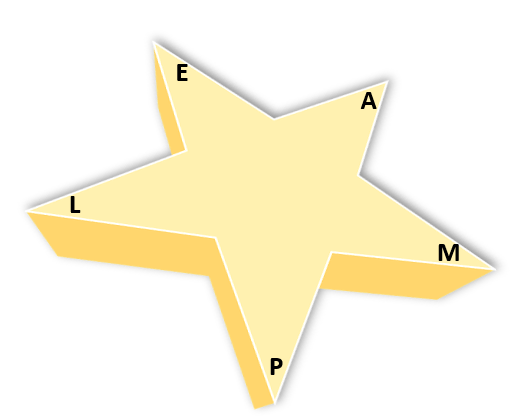Last Updated on March 12, 2024 by Lukas Rieder
Coordination
We understand coordination as the alignment of processes to achieve a result on time. Decision-makers and implementers in an organization coordinate objectives, capacities, available resources and the rules of conduct of all participants in such a way that the overall organization acts successfully in the long term and meets the relevant customer and environmental needs. This work takes place within the body of the AMPLE-star.

Coordination takes place in more or less detailed structured processes.
Examples of highly detailed processes:
-
- Receipt, processing and execution of a customer order
- Triggering, processing and measurement of a production order with final stock receipt
- Placing an order with a supplier including receipt of the delivery, recording of the necessary data and storage in the warehouse
- Preparation of payrolls including posting and payment
- Hiring of new employees and recording of all personal and payroll-related data
- Sequence of generating, negotiating and deciding objectives.
Less detail is often given to processes that deal with changes in the company’s environments or involve more than one of the 5 top-controls:
-
- Revision of corporate policy and strategic planning
- Establishment of research and development priorities
- Education and training programs for the workforce and managers
- Decisions on marketing and sales promotion programs
- Establishment of internal success potentials relevant to the strategies.
- Definition of “right of way” rules for decisions affecting several areas, e.g. local sales organization versus central product management.
Coordination is particularly important when decision-making competencies are not fully regulated and/or different interests conflict. This happens during finding and fixing objectives, during implementation, and when corrective measures are defined. To this end, it is advisable to determine in advance which person is to assume the arbiter function. This does not always have to be the next higher superior. Specialized personnel or external persons of trust can also assume this function.
The quality and accuracy of the data required for decision-making is central to coordination. If all parties involved in the decision process receive the same and complete data, this usually creates a clear starting position.
Enterprise Resource Planning (ERP) Systems and related systems such as Customer Relationship Management (CRM), the whole accounting applications and the aggregating management accounting (cost, activity, revenue and profit accounting) should provide the data relevant for decision making. This applies to planned and actual values as well as to the derivation of estimates. Corporate policy and strategic determinations as well as descriptions of the content of plans and projects often cannot be documented in the standard applications mentioned. Spreadsheets as well as text and image-based applications are (still) better suited for this purpose.
Because coordination requires a lot of time, it is advisable to provide time-windows for mutual coordination, especially in the planning calendars (strategic and operational).
